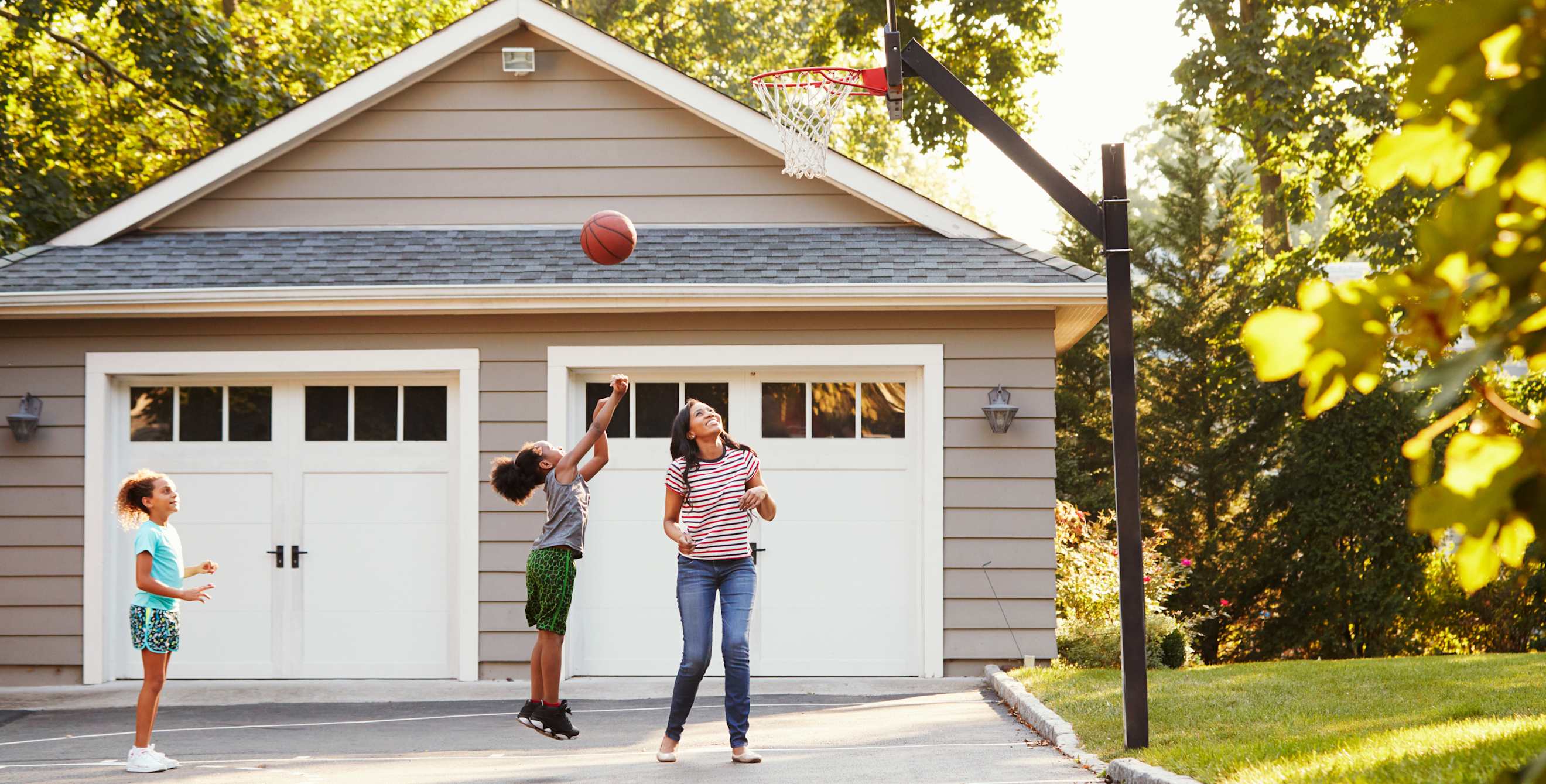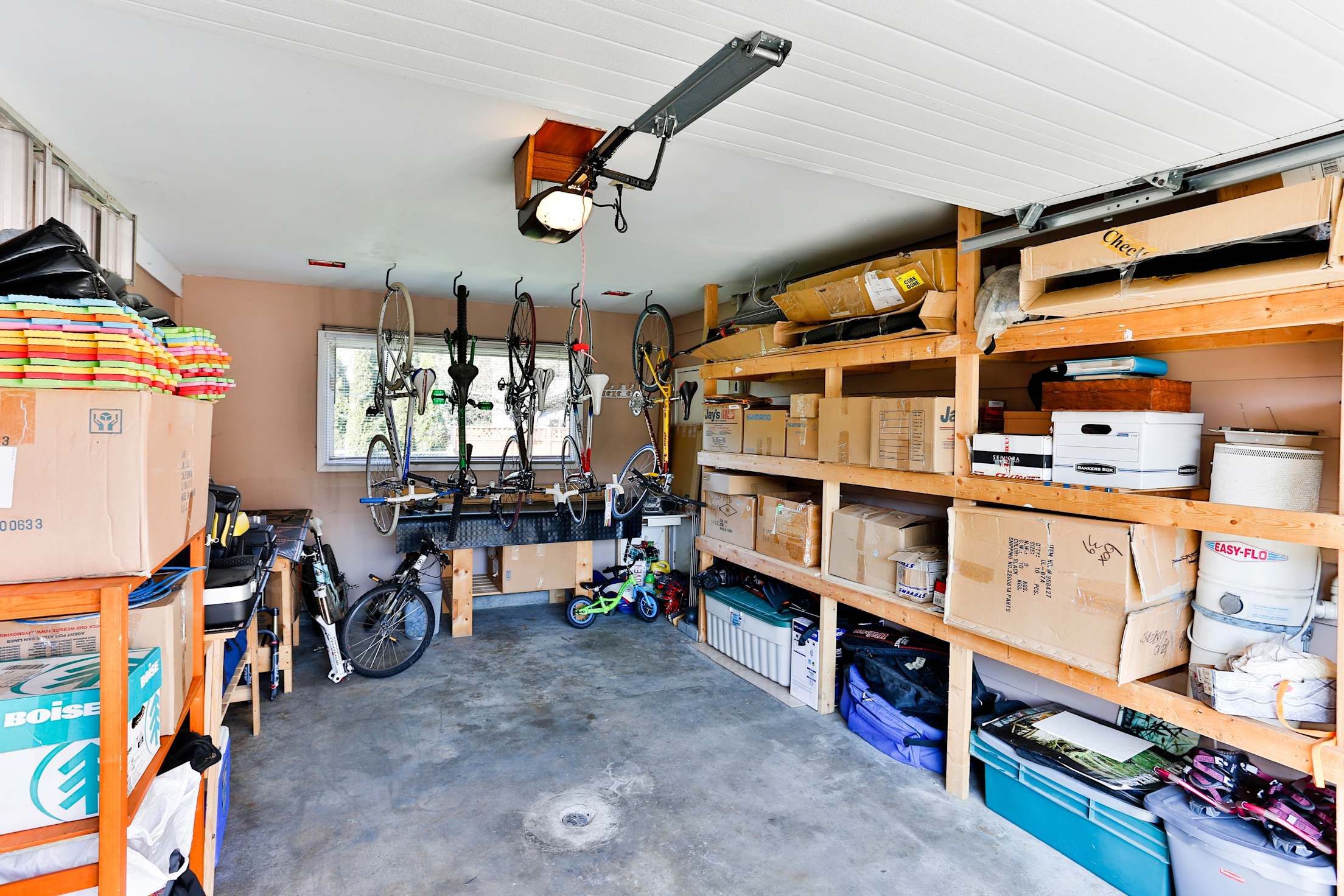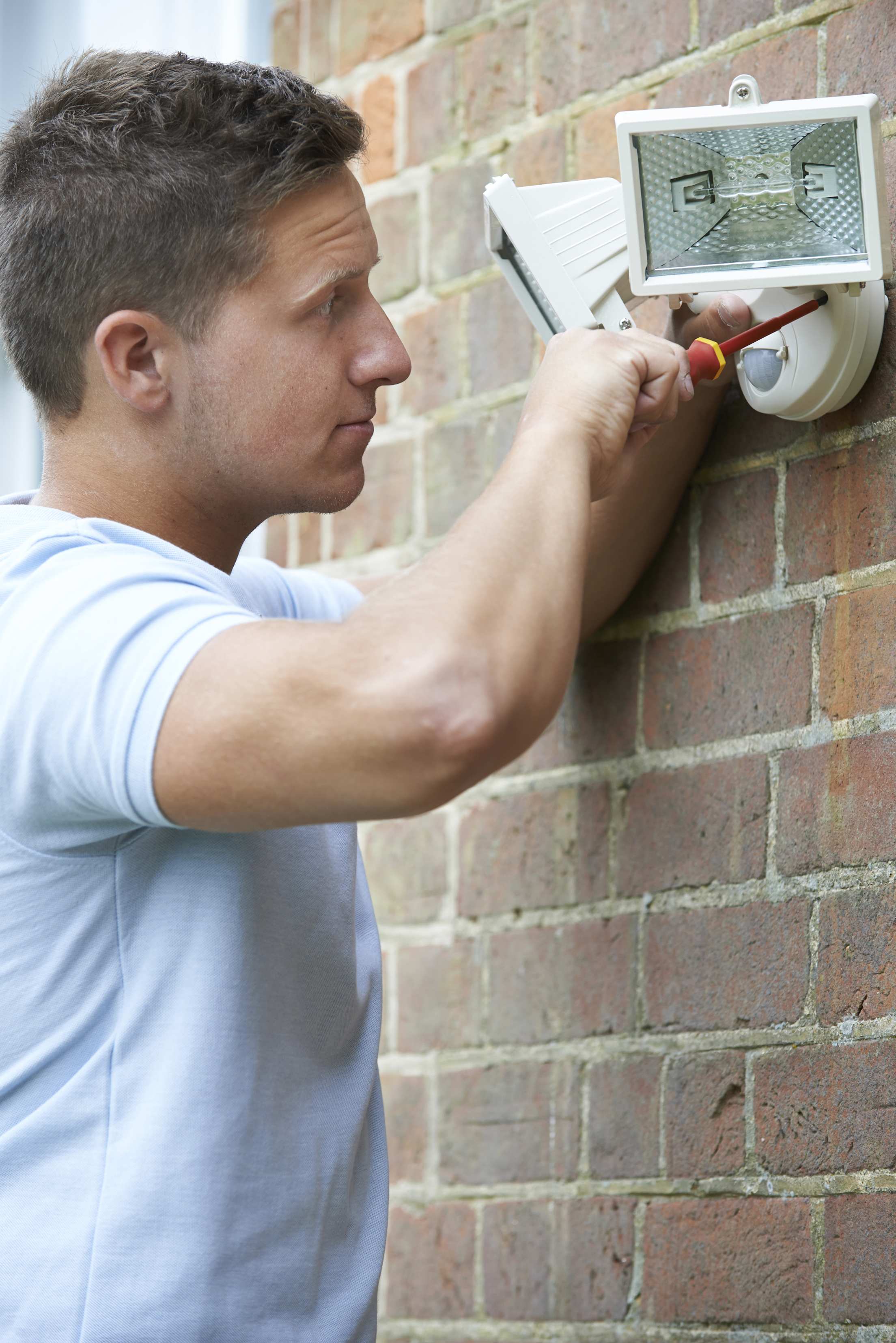
How to Secure Your Garage to Prevent Theft and Damage
Keep your car—and access to your home—safeguarded.

If you’re like many people, your garage is a resting spot for many items with an uncertain future (Keep to use it once a year? Donate? Trash?). But it’s also the location for expensive tools and equipment and precious keepsakes, as well as the parking spot for one of your biggest investments: your car.
That means it’s essential to safeguard your garage (and the items within it) from both burglars and pests. Car theft—and theft of catalytic converters—is on the rise this year, with nearly half a million cars stolen in the first half of 2022, according to the National Insurance Crime Bureau. And once insects and rodents make their way into your garage, they can damage your car and other items.
If you have an attached garage, it may also be a main entry point into the house, points out Shane Hughes, operations manager at AAA Smart Home Security.
Here’s how to keep your garage secure, so you can safeguard possessions as well as access to your home.
Keep pests out.
All sorts of unwanted critters—such as mice, rats, roaches, and spiders—can find their way into your garage, says Bob Gilbert, a board-certified entomologist with Blue Sky Pest Control. The space often has more tolerable temperatures than the outside, and it may also be dark and possibly provide food, water, and nesting materials. “All these things make the garage a comfortable place to live,” Gilbert says. Once inside the garage, animals can cause an array of problems, such as:
- Venturing into your home. Pests can make inroads to an attached home. A mouse can enter through a hole as small as a dime.
- Chewing and making nests. Rodents “may chew car wiring or make nests in areas that could impede vehicle function,” Gilbert says.
- Damage other items. Rodents may chew up other items (think: your camping gear) or anything else they come across. They may also stain or ruin possessions with feces or urine, Gilbert says. “Crickets, silverfish, earwigs, and some cockroaches may find the garage a great place to settle down and raise a family as well. These pests will chew cardboard, paper, starch, and glue from items.”
- Introduce parasites. If rodents carry parasites, they can bring them into the space.

Given all this, your best bet is to take steps to keep pests out.
- Put any food in airtight containers.
- Identify and fix leaks (check the sink, hot water heater, washing machine, and so on).
- Reduce clutter, and place items in plastic storage boxes with tight fitting lids and on shelves to eliminate nesting spots.
- Seal up the space. Eliminate gaps that would allow entry to the garage. “Make sure the garage door’s rubber seal is intact such that no light can be seen from outside when the door is closed,” Gilbert says. Use pest-proof door sweeps on any doors, and ensure weather stripping is intact. Seal off vents with fine mesh and trim back nearby foliage.
- Keep the garage door closed when you’re not entering or leaving. Otherwise, it’s “an open invitation to pests to make themselves at home, especially at night with the lights on,” Gilbert says.
If you do have pests, “call a professional, licensed pest control company to analyze the situation and resolve your pest issues quickly,” Gilbert says.
Install a stronger lock.
Keep doors—the garage door, the door from the garage into the home, or the door from the side yard into the garage—shut and locked when not in use.
“You can have the fanciest security system, tons of cameras, motion sensor lights, strong locks and doors—but if you don’t use the locks you won’t stop a determined burglar from slipping in quickly—and quietly,” Freismuth says.
Install a dependable lock on the garage door, as well as any side doors and the interior door that allows entry to your home. “Deadbolts are preferred over basic knobs with built-in twist locks,” Freismuth says.
Smart Tip: Consider adding a garage tilt sensor, which alerts you if the garage door is elevated to a certain degree, says Hughes from AAA Smart Home and Security.

Light up the space.
“Burglars love to conduct their activities under the cover of darkness,” says security expert Thomas Freismuth, president of Calsec Protective Services. Bright, well placed motion sensor lights can be a deterrent. “I recommend placing motion sensor lighting directly over the garage door(s), side door(s), gates, and on each corner of the garage so that you have the front, side, and rear areas (in the case of detached garages) well lit if motion is detected,” Freismuth says.
“My personal favorite are lights that have a built-in camera that sends you a text notification when motion is detected,” Fresismuth says. There are also solar- and battery-powered options, as well as lights that are hardwired to power.
Add cameras.
Thieves seek out opportunities when no one is home, but a home security camera gives you visibility from afar. Aim to cover the whole perimeter of your home without any blind spots.
“I typically have a camera mounted in the upper corner of the inside of my garage that lets me see the side entrance door as well as the garage door from the inside,” Freismuth says.
Smart Tip: AAA Smart Home Security offers motion detectors as well as indoor cameras that can be used to detect movement so that you can follow up as needed with the police, Hughes says.
Lock the garage door or emergency release.
Thieves have been known to quietly break a window or panel on the garage door or simply tilt the top panel open slightly in order to reach in with a hand or tool and disengage the emergency release on the garage door opener. This allows them to then lift the garage door open and access everything inside.
To prevent this, you can:
- Install a sliding garage door lock that can be firmly locked with a padlock to the door's track so that even if the garage door opener is disengaged, the door cannot be opened without releasing the padlock.
- ZipTie or otherwise lock the emergency release cord in place so it cannot be pulled. If the power goes out and you need to release the garage door opener and lift the door by hand, you will be able to cut the ZipTie from the inside before pulling the emergency release lever.
AAA Members save an average of 15% with AAA Smart Home Security professional monitoring services.